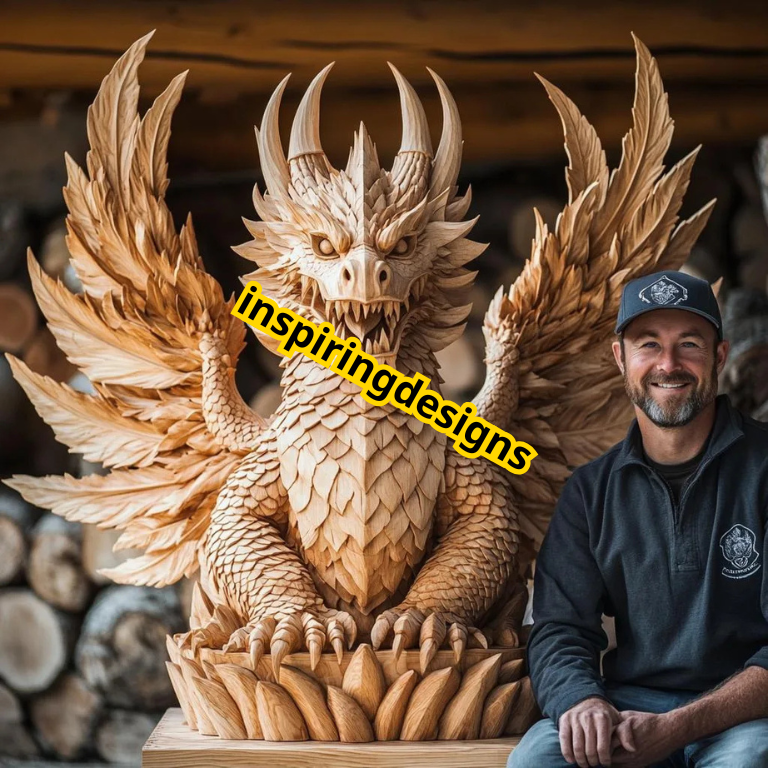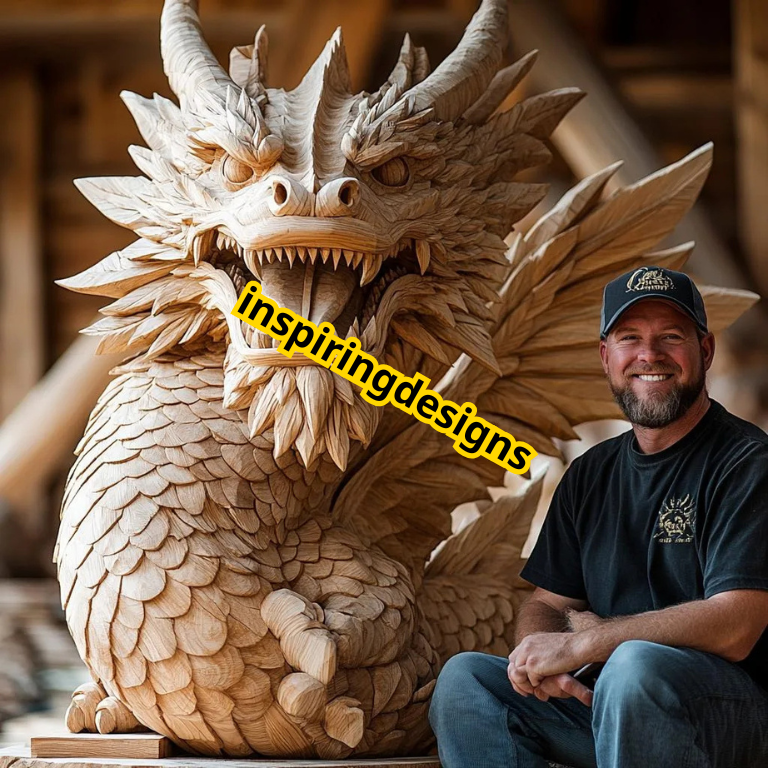Dragons have fascinated humanity for centuries, embodying power, wisdom, and mystery in myths worldwide. When skilled artisans transform these legendary creatures into dragon wood carvings, the outcome is a stunning blend of nature and imagination. The rugged texture of wood, with its swirling grains and warm hues, enhances the mythical allure of dragons, making each piece a testament to both artistic talent and cultural heritage. Far more than mere decorations, these carvings are expressions of folklore, belief, and the timeless connection between humans and the natural world.
In this exploration, we dive into the rich history, intricate artistry, and enduring appeal of dragon wood carvings. From ancient traditions to contemporary masterpieces, this journey reveals why these creations continue to captivate art enthusiasts, collectors, and dreamers alike.

A Journey Through Time: The History of Dragon Imagery in Woodworking
The practice of carving dragons into wood stretches back to the dawn of human civilization. Across continents, from the ornate temples of China to the rugged shores of Scandinavia, dragon imagery has adorned wooden surfaces as symbols of strength and protection. In Eastern cultures, dragons are celebrated as wise and benevolent guardians. Chinese woodcarvers have long sculpted these creatures into palace beams and furniture, infusing them with imperial grace and prosperity.
In contrast, Western traditions often portray dragons as fierce adversaries. Norse artisans carved serpentine dragons onto Viking ship prows, believing they offered safety on treacherous voyages. Despite these varied perspectives, the dragon remains a universal emblem of awe.
Wood itself carries profound meaning in this craft. As a living material, it reflects life and resilience, qualities that echo the dragon’s mystical essence. Crafting a dragon from wood becomes a sacred act, merging the vitality of trees with the majesty of myth. Different woods, such as sturdy oak or fragrant cedar, lend unique traits to each carving, deepening its historical and spiritual resonance.
Mastering the Craft: The Art of Dragon Carving
The creation of a dragon wood carving demands patience, precision, and passion. It begins with selecting the ideal wood. Artisans might choose oak for its durability and subtle grain, mahogany for its vibrant tones, or cedar for its aromatic boldness. Each wood type shapes the carving’s character, from the texture of scales to the sweep of wings.
Tools are equally vital. Traditional carvers wield chisels, gouges, and knives, each instrument coaxing out distinct details. While modern technology offers power tools for speed, the finest touches come from handwork, preserving the soul of the craft.
The process unfolds in stages. Artists start with sketches, drawing inspiration from reptiles, ancient art, and flowing calligraphy to design the dragon’s form. They rough out the shape with a saw, then carve key features like the head and claws. Delicate work follows, shaping scales and eyes with care. Finally, sanding and finishing with oils or stains bring the wood’s natural beauty to life, completing a piece that feels both timeless and alive.

Diverse Dragons: Styles and Interpretations
The beauty of dragon wood carvings lies in their endless variety. Eastern styles feature slender, sinuous dragons with wise expressions and flowing manes, embodying elegance and harmony. These graceful designs often grace gardens, homes, or spiritual spaces, reflecting centuries of tradition.
Western dragons, by contrast, are bold and formidable, with muscular bodies, jagged wings, and fierce snarls. These powerful carvings make striking focal points, perfect for mantels or walls where they command attention.
Modern influences have birthed fantasy dragons, inspired by books and films. These might boast exotic features like glowing horns or multiple heads, delighting collectors and fans of imaginative tales. Meanwhile, some carvers embrace abstraction, using smooth curves and open spaces to hint at a dragon’s presence without literal detail. These minimalist works shine in sleek, contemporary settings, proving the art’s versatility.

Beyond Decoration: Cultural Significance and Modern Appeal
A dragon wood carving transcends ornamentation, carrying layers of meaning. Across cultures, dragons symbolize duality—creation and chaos, danger and guardianship. This complexity makes them potent additions to any space, infusing it with balance and energy.
Their craftsmanship also elevates them to treasures. The time and skill poured into each piece often render them heirlooms or prized collectibles, cherished for both artistry and rarity. Today, they enhance modern environments in creative ways, from staircase railings shaped like dragon tails to doorways crowned with carved heads, blending myth into everyday life.
Renowned artists amplify this legacy. Japan’s Masaru Takahashi crafts fluid Eastern dragons, while America’s David Esterly fuses classical techniques with fantasy. China’s Chen Wenling blends tradition with surreal flair. Iconic installations, like Kyoto’s temple gates or Norway’s Viking ship replicas, showcase how these carvings bridge past and present, captivating all who encounter them.
Conclusion: The Living Legacy of Wooden Dragons
In an era of fleeting trends and digital distractions, dragon wood carvings stand as enduring marvels. Each piece weaves together nature’s gifts and human ingenuity, breathing life into ancient stories. Whether guarding a home, gracing a gallery, or inspiring a public space, these works stir wonder and reverence.
As we admire their intricate details and bold presence, we connect to a heritage that spans generations. The legacy of wooden dragons lives on, a roaring tribute to the union of craftsmanship and myth that continues to enchant the world.






